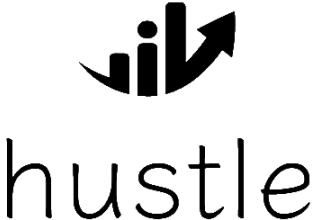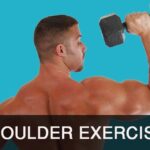Not only do strong, broad shoulders look impressive, but training your shoulder muscles is important for performance both inside and outside the gym. Whether you’re a seasoned athlete or just starting your fitness journey, this article will guide you through five effective shoulder exercises to achieve your goals. Strong shoulders are essential for proper posture, preventing injuries, and enhancing overall upper body strength and functionality. So, pick up your dumbbells and let’s dive into the best moves for shoulder development.
Key Takeaways
- Functional Strength and Stability: Shoulder exercises like the ones listed improve stability and functionality for everyday activities.
- Improved Posture: Regular shoulder training strengthens muscles that are vital for maintaining proper spinal alignment and posture.
- Comprehensive Training: The selected exercises target various parts of the shoulders, ensuring a balanced and thorough workout.
- Variety and Technique: Incorporating different movements and proper techniques is key to effective shoulder development.
- Progressive Overload: To build shoulder mass and strength, progressively increase the intensity of your workouts as you advance.
1. Rear Delt Raise

The rear deltoid raise is a fundamental exercise for targeting the often neglected posterior deltoid muscles. By incorporating this movement into your routine, you can expect to see improvements in both shoulder strength and stability.
Performing the Rear Delt Raise with dumbbells allows for a range of motion that engages not only the rear delts but also the upper back muscles. For those looking to focus on one side at a time, single-handed variations are an excellent option.
Consistent training with exercises like the Rear Delt Raise is crucial for achieving a balanced and well-developed shoulder musculature.
Remember to maintain proper form throughout the exercise to maximize rear delt growth and ensure safety. Here’s a simple guideline to follow:
- Begin with a light weight to establish correct movement patterns.
- Gradually increase the weight as your strength improves.
- Aim for 3 sets of 10-15 repetitions.
- Allow for at least 60 seconds of rest between sets.
2. Arnold Press

The Arnold Press, a creation of bodybuilding legend Arnold Schwarzenegger, is a dynamic exercise that targets the entire shoulder complex. By incorporating a rotation of the palms during the press, it effectively engages all three heads of the deltoids, leading to a more comprehensive shoulder development.
To perform the Arnold Press, begin seated with dumbbells at shoulder height, palms facing you. As you press the weights overhead, rotate your arms so that your palms face forward at the top of the movement. This rotation is key to the exercise’s unique benefits, as it emphasizes the posterior deltoid.
The Arnold Press stands out for its ability to sculpt the shoulders and enhance overall upper body strength. It’s not just about aesthetics; this exercise contributes to better performance in other lifts as well.
Here’s a simple guide to get started:
- Sit on a bench with dumbbells in hand, palms facing your shoulders.
- Press the dumbbells up while rotating your wrists so that your palms face away at the top.
- Fully extend your arms, pause, then reverse the movement.
For optimal results, aim for 3-4 sets of 6-10 repetitions, with at least 60 seconds of rest between sets. Whether you’re looking to improve muscle symmetry or just build strength, the Arnold Press is a versatile addition to your shoulder routine.
3. Face Pulls

Face Pulls are an essential exercise for anyone looking to strengthen their posterior deltoid muscles, rhomboids, and traps. This exercise is not only effective for building muscle but also for enhancing shoulder stability and posture. It’s a versatile movement that can be performed with a cable pulley machine, and it’s suitable for individuals at various fitness levels.
To execute Face Pulls correctly:
- Set the rope attachment at upper chest height.
- Hold the rope with an overhand grip and step back to create tension.
- Sit back into your hips slightly.
- Pull the cable towards your face, allowing your elbows to flare out.
- Hold briefly at the top of the movement to engage your deltoids and upper back.
- Slowly return to the starting position.
When performing Face Pulls, it’s crucial to keep your torso stable to isolate the rear deltoids effectively. Adjust the weight to maintain proper form, aiming for 3 to 5 sets of 10 to 15 repetitions.
While there’s no specific “push to pull” ratio established through data, incorporating Face Pulls into your routine helps balance the often neglected posterior deltoids. Use a weight that challenges you while still allowing you to complete the set with good form, typically leaving you 0 to 2 reps short of failure.
4. Single-Arm Dumbbell Row

The Single-Arm Dumbbell Row is a powerhouse when it comes to building strength and stability in the back. It’s a compound exercise, engaging multiple muscle groups including the lats, trapezius, rhomboids, and core. This exercise is versatile, suitable for all training levels, and allows for easy weight adjustments to maintain proper form.
To perform the Single-Arm Dumbbell Row:
- Place one knee and hand on a bench, with the opposite foot on the ground.
- Hold a dumbbell in your free hand, letting it hang toward the ground.
- Pull the dumbbell towards your hip, squeezing your back muscles.
- Lower the dumbbell to the starting position and repeat for the desired number of reps.
Another benefit of this exercise is its contribution to better posture. By strengthening key back muscles, it helps you maintain an upright position whether you’re sitting or standing.
Remember to keep your movements controlled and focus on engaging your back muscles throughout the exercise. Start with a weight that allows you to complete the set with good form and gradually increase as you build strength.
5. Reverse Dumbbell Flyes

Reverse dumbbell flyes are a cornerstone of shoulder training, particularly for the posterior deltoids. Best exercise for rear shoulder development, this move also recruits the rhomboids and trapezius muscles, enhancing upper back strength.
To perform Reverse Dumbbell Flyes, begin by standing with your feet shoulder-width apart, holding dumbbells at your sides. Hinge at the hips to bring your torso nearly parallel to the ground, maintaining a slight bend in your elbows. With control, raise the dumbbells outward until your arms are parallel to the floor, then slowly return to the starting position.
Incorporating variations such as the seated bent-over rear-delt fly can further challenge your muscles and improve stability. It’s crucial to focus on form and controlled movements to prevent injury and ensure maximum muscle engagement.
Here’s a quick guide to your Reverse Dumbbell Flyes workout:
| Sets | Reps | Rest |
|---|---|---|
| 3 | 10-15 | 60 sec |
Remember, using a weight that brings you close to failure while still allowing you to maintain proper form will yield the best results. Aim for an RPE (Rate of Perceived Exertion) of 8 to 10 for optimal muscle growth.
Conclusion
Incorporating a variety of shoulder exercises into your workout routine is essential for building strength, stability, and enhancing upper body functionality. From the classic overhead press to targeted movements like rear delt raises and face pulls, each exercise plays a crucial role in developing well-rounded shoulder muscles. Whether you’re a beginner or an advanced athlete, adjusting the number of exercises, reps, and sets to your level will ensure continuous progress. Remember to start with a proper warm-up and finish with a cool-down to prevent injuries. With dedication and the right techniques, you’ll be on your way to achieving impressive and functional shoulders.
Frequently Asked Questions
Are 3 shoulder exercises enough for a good workout?
Three shoulder exercises can be sufficient for a solid training session if they target all three deltoid heads. For example, a combination of the barbell overhead press, Arnold press, and a lateral raise could provide a well-rounded workout.
What are the most effective shoulder exercises?
Effective shoulder exercises include the overhead press, Arnold press, face pulls, single-arm dumbbell rows, and reverse dumbbell flyes, as they work various parts of the deltoids and contribute to overall shoulder strength and stability.
How can I improve my shoulder posture?
Strengthening your shoulder muscles with exercises like rear delt raises and reverse dumbbell flyes can help maintain proper posture by supporting the alignment of your spine and upper body.
What does science tell us about deltoid muscles?
Science indicates that the deltoid muscles are composed of three heads (anterior, lateral, and posterior) and that targeted exercises can strengthen each head, leading to improved shoulder function and aesthetics.
How often should I train my shoulders?
Training frequency can vary based on experience level. Beginners might aim for 2 exercises per workout, intermediates for 3-4, and advanced individuals for 4 or more, with sufficient rest for muscle recovery.
What is a good shoulder workout routine?
A good shoulder workout routine includes a warm-up with light cardio and dynamic stretches, followed by exercises like the overhead press, Arnold press, and isolation movements, and concludes with a cool-down.








Your blog is a shining example of excellence in content creation. I’m continually impressed by the depth of your knowledge and the clarity of your writing. Thank you for all that you do.
Your writing is like a breath of fresh air in the often stale world of online content. Your unique perspective and engaging style set you apart from the crowd. Thank you for sharing your talents with us.